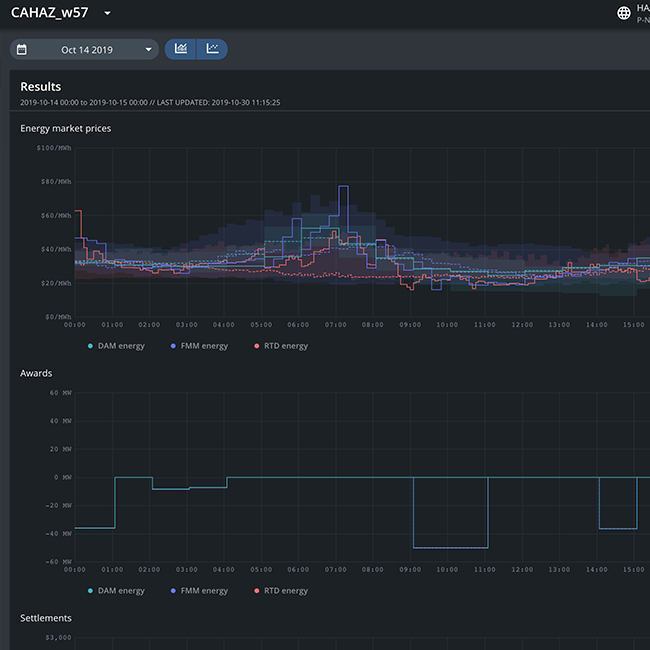The rapid advancement of battery-based energy storage technology has made it critical to the future of electricity systems. When grids need fast-responding, flexible resources that can deliver full output for minutes to hours, energy storage delivers where synchronous generators cannot. All while operating free from direct greenhouse gas emissions, providing flexibility critical to enabling a low-carbon electricity grid.
As our electric grids replace fossil fuel generators with renewables, grid operators face a historic increase in the number of frequency deviations per year, ultimately resulting in power loss and threatening system health. To meet this challenge, grid operators are creating new frequency response products that support grid balancing and stability.
Britain’s National Grid ESO (NGESO) has been a pioneer in testing new types of frequency services to tackle their unique challenges: managing an island grid with limited interconnection, steep renewable targets, coal phasing out, and a gap between old nuclear plants being decommissioned and new ones coming online.
Beginning in 2021, NGESO significantly shifted its approach to procuring frequency products, announcing plans to procure up to 1 GW of bi-directional frequency response capacity over the next few years. NGESO’s technical requirements for frequency regulation services require sub-second response times and advanced controls functionality with high resolution frequency measurement (1 mHz)—perfectly suited to the capabilities of energy storage systems.
Fluence Supports Grid Balancing in Great Britain with Full Suite of Frequency Services
Fluence has launched a full suite of dynamic frequency response capabilities that enable storage asset owners and operators to support new NGESO frequency reform efforts. Building on our successful work in the Irish single electricity market (I-SEM), Fluence OS—our fully integrated storage controls platform—will enable developers and independent power producers in the National Grid market to participate in all three of the grid’s frequency response services:
- Pre-fault Dynamic Regulation (<10s response time) that gradually corrects smaller, continuous frequency deviations
- Dynamic Moderation (<1s response time) to help resolve sudden, sizable supply and demand imbalances
- Post-fault Dynamic Containment (500-1000ms response time) to keep frequency within +/-0.5Hz when it drifts outside operational limits of +/- 0.2Hz
Fluence OS is fully enabled to deliver NGESO frequency response services, including integration with pre-tested metering and data outputs to support stringent reporting requirements. Fluence has successfully rolled out all three of these services for participation in auction - providing the grid with high-, low-, and simultaneous high/low frequency responses at precise frequency measurements (1mHz) and consistently maintained response times.
To do so, the Fluence OS Market Dispatch Unit (MDU) uses embedded logic and application rules to constantly monitor frequency points, determining whether to resolve frequency deviations by pulling power from the grid or adding power to it based on a droop curve model. During dispatches, Fluence OS automatically shifts baselines to manage the system’s state-of-charge, ensuring system longevity and maximum availability. These capabilities come pre-integrated into our Gridstack systems, so there’s no need to layer additional third-party hardware or software on top of existing storage infrastructure.
Customers can configure the Fluence OS application’s parameters and stack multiple storage services on top of each other to capture the highest value in the market when existing grid services change or new revenue opportunities emerge, maximizing lifetime revenues of the system.
And to reduce operator workload and show performance against service obligations, Fluence OS will provide customers with comprehensive, high-resolution data logging and measurement for NGESO reporting and compliance, including:
- CSV files generated for each full hour of service
- 50ms interval data available within each hour
- 3-4 decimal places as required for reporting data
- UTC ISO 8601 format on all timestamps

The Expanding Need for Fast, Reliable Frequency Regulation Services
As grids around the world bring more solar and wind power online, and retire more fossil fuel generators, their operators will face similar frequency regulation and grid balancing issues. Here are just a few examples of how TSOs are tackling them:
- In 2021 state-owned utility Taipower launched Taiwan’s first Ancillary Service Trading Pilot Platform, which included the country’s first megawatt-level grid-connected energy storage system
- The Australian Energy Market Operator (AEMO) operates eight frequency control and ancillary services markets, paying generators for both availability and delivery of power.
- Since 2015 the Electric Reliability Council of Texas (ERCOT) has called on a Fast Responding Regulation Service that pays resources able to begin regulating grid frequency within 60 cycles of a triggering event.
Fluence has a long history of supporting grid stability with energy storage controls applications optimized for market-based frequency response programs. With over 4,800 MW of energy storage deployed or contracted globally across 30 markets, Fluence is at the forefront of supporting emerging grid services with flexible storage products, integrated controls, and advanced digital applications.
Cautionary Note Regarding Forward-Looking Statements
The post includes certain “forward-looking statements” within the meaning of Section 27A of the Securities Act and Section 21E of the Securities Exchange Act of 1934, as amended which are subject to the “safe harbor” protections thereunder. All statements, other than statements of present or historical fact included in this post are forward-looking statements, including, without limitation, those regarding Fluence’s products and platforms ability to enable developers and power producers in the National Grid market to participate in frequency response services, the ability of Fluence OS to aid customers in capturing the highest value in the market, and the ability of Fluence OS to provide data logging and measurement for NGESO reporting and compliance.
The forward-looking statements contained in this post are based on our current expectations and beliefs concerning future developments, as well as a number of assumptions concerning future events, and their potential effects on our business. These forward-looking statements are not guarantees of performance, and there can be no assurance that future developments affecting our business will be those that we have anticipated. These forward-looking statements involve significant risks and uncertainties that could cause the actual results to differ materially from the expected results. Most of these factors are outside Fluence’s control and are difficult to predict. Factors that may cause such differences in expected results include but are not limited to the following: the operational performance of Fluence OS and customers’ use of Fluence OS, unanticipated operation of existing grid infrastructure, as well as unanticipated changes in frequency response services. Fluence cautions that the foregoing list of factors is not exclusive. Additional information about factors that could materially affect Fluence is set forth under the “Risk Factors” section in its Annual Report on Form 10-K and Quarterly Reports on Form 10-Q filed with the Securities and Exchange Commission, other risks and uncertainties discussed in any subsequent reports that Fluence files with the Securities and Exchange Commission from time to time and available on the SEC’s website at www.sec.gov.
Except as otherwise required by applicable law, Fluence disclaims any duty to update any forward-looking statements contained in this post, all of which are expressly qualified by the statements in this section, to reflect events or circumstances after the date of this post. Should underlying assumptions prove incorrect, actual results and projections could differentiate materially from those expressed in any forward-looking statements. Given these uncertainties, investors are cautioned not to place undue reliance on our forward-looking statements.
















